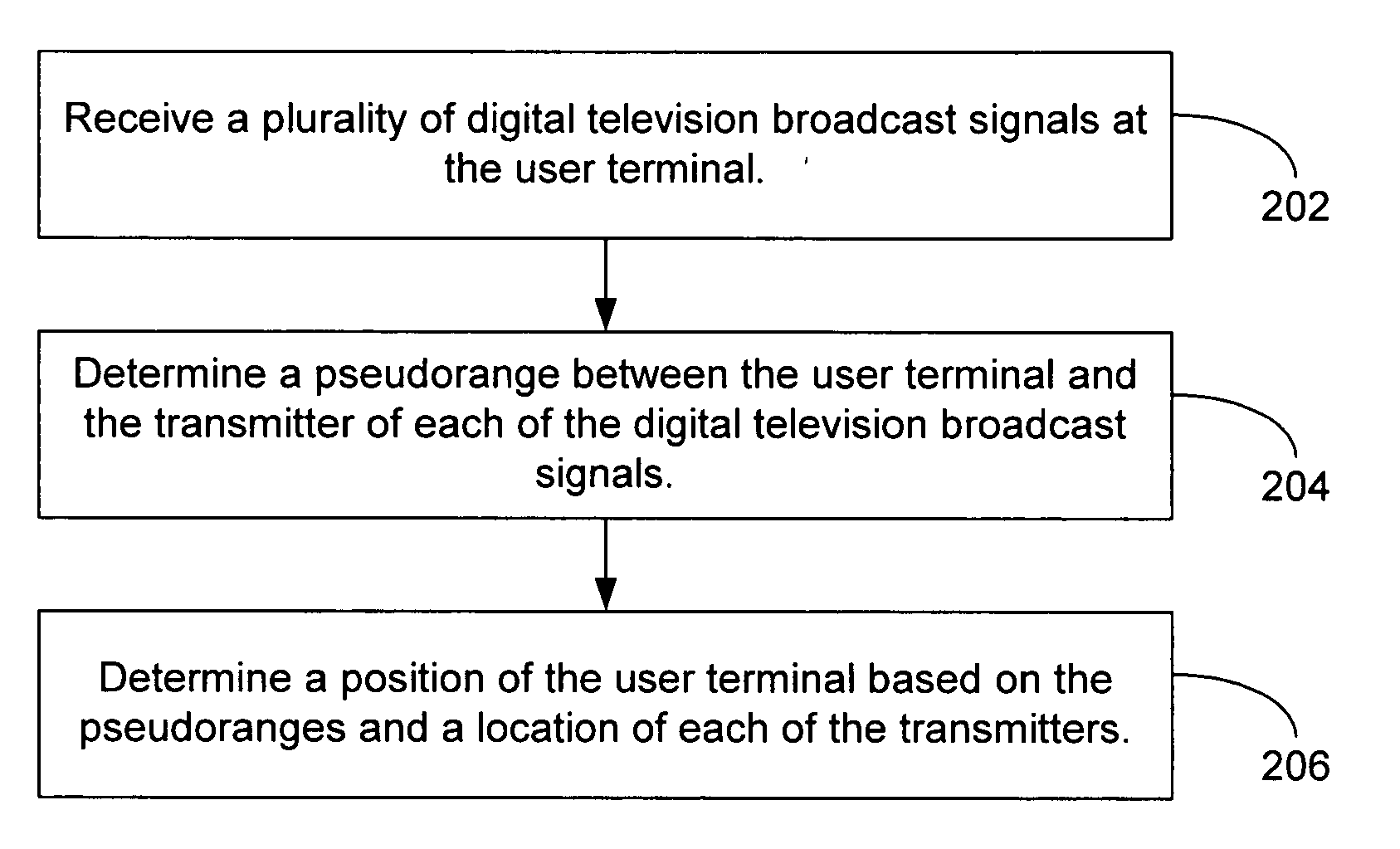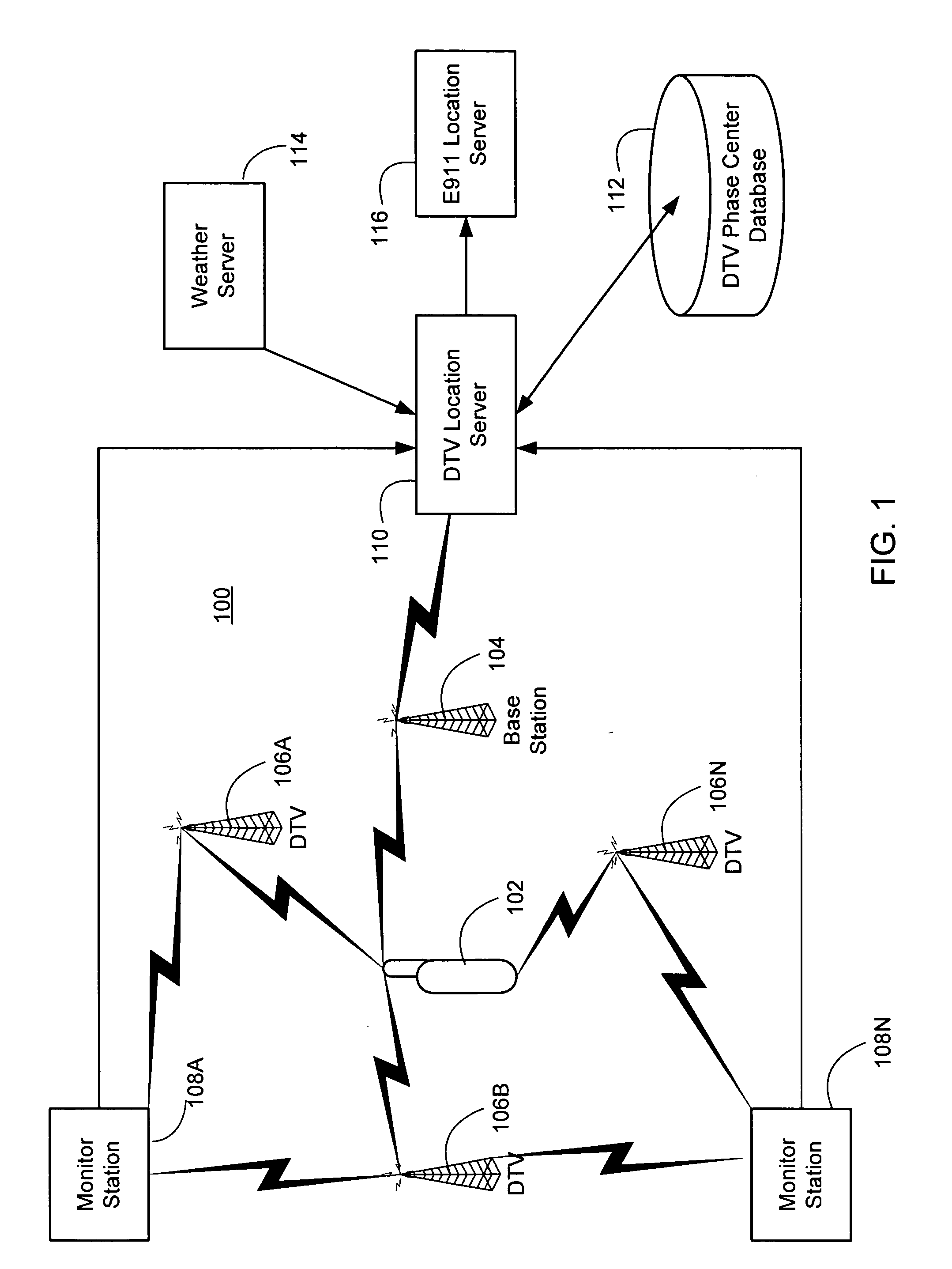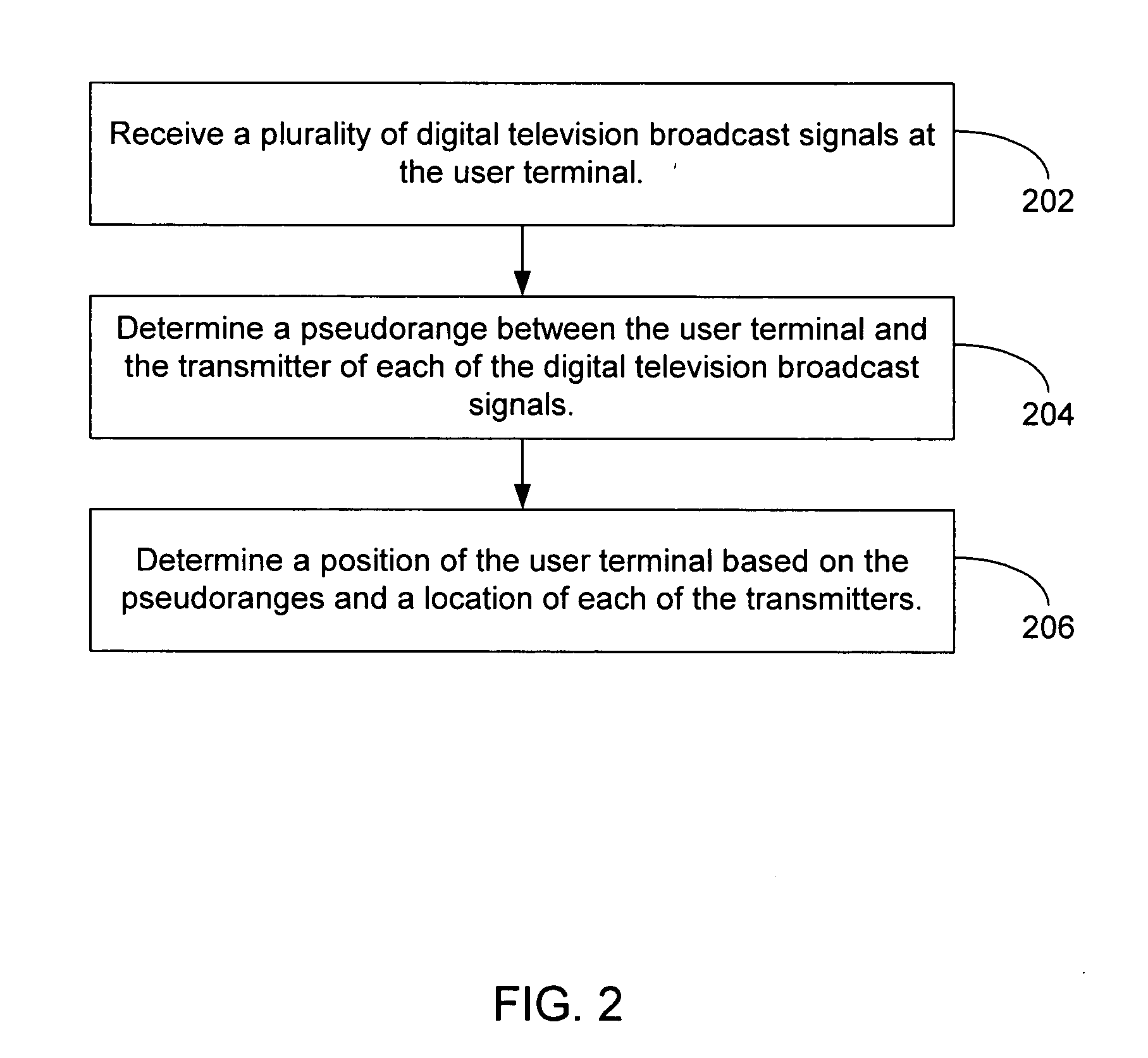Position location using digital audio broadcast signals
a technology of digital audio broadcast and position determination, applied in direction finders using radio waves, navigation instruments, instruments, etc., can solve the problems of marginally useful or not useful signals, less effective gps, and marginally useful signals, and achieve minimal processing requirements, reduce the effect of multipath effects, and improve the effect of geometry
- Summary
- Abstract
- Description
- Claims
- Application Information
AI Technical Summary
Benefits of technology
Problems solved by technology
Method used
Image
Examples
Embodiment Construction
Introduction
Digital television (DTV) is growing in popularity. DTV was first implemented in the United States in 1998. As of the end of 2000, 167 stations were on the air broadcasting the DTV signal following the ATSC digital TV standard. As of Feb. 28 2001, approximately 1200 DTV construction permits had been acted on by the FCC. According to the FCC's objective, all television transmission will soon be digital, and analog signals will be eliminated. Public broadcasting stations must be digital by May 1, 2002 in order to retain their licenses. Private stations must be digital by May 1, 2003. Over 1600 DTV transmitters are expected in the United States. Other regions are implementing similar DTV systems. The European DTV standard called Digital Video Broadcasting (DVB) is the most widely accepted in the world. The DVB terrestrial standard version is denoted DVB-T. The Japanese system is a variation of DVB. The Japan Broadcasting Corp. (NHK) has defined a terrestrial DTV signal fo...
PUM
 Login to View More
Login to View More Abstract
Description
Claims
Application Information
 Login to View More
Login to View More - R&D
- Intellectual Property
- Life Sciences
- Materials
- Tech Scout
- Unparalleled Data Quality
- Higher Quality Content
- 60% Fewer Hallucinations
Browse by: Latest US Patents, China's latest patents, Technical Efficacy Thesaurus, Application Domain, Technology Topic, Popular Technical Reports.
© 2025 PatSnap. All rights reserved.Legal|Privacy policy|Modern Slavery Act Transparency Statement|Sitemap|About US| Contact US: help@patsnap.com



